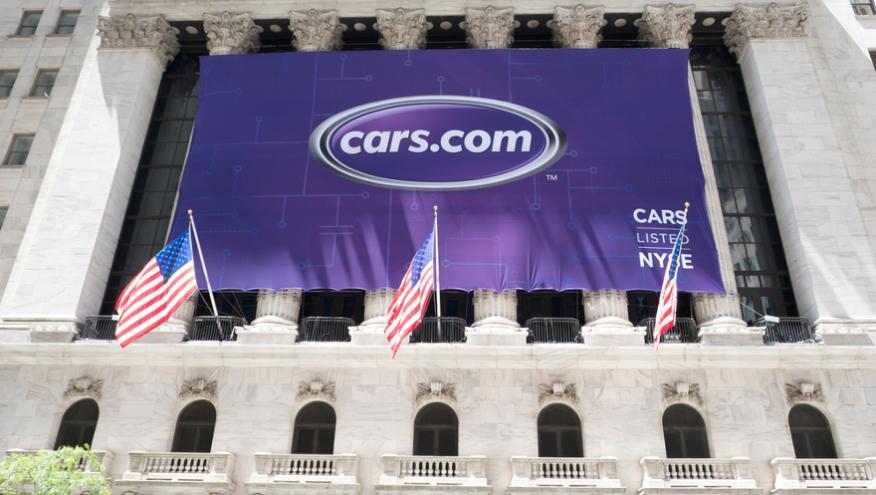Cars.com traffic trends may point to ‘healthier’ car sales, including used

Photo credit: Heather Shimmin / Shutterstock.com
Traffic to Cars.com was up 11 percent in 2018, and an especially strong final month to the year could signal healthier-than-expected car buying in early 2019, the company says. And the outlook could be particularly rosy for the used-car market.
The company said it had 12 straight months of growth, including a 21-percent year-over-year traffic spike during December, in what turned out to be a record month.
There was also an 8-percent spike in Cars.com mobile app visits in December.
Cars.com averages 19 million visitors a month, 80 percent of which are in-market shoppers, chief marketing officer Brooke Skinner Ricketts said in a phone interview Monday. And shoppers on the site buy within 60 days, on average.
“This spike in traffic over the course of the year I think is a reflection of shopping behavior, and in particular, towards the end of the year, it’s an indication … that we’re going to see a stronger-than-expected spike in the beginning of the year, assuming that the patterns that we see on the site follow,” she said.
In a news release on the traffic gains, Cars.com chief executive Alex Vetter said: “With an average of 19 million active car shoppers on our sites monthly, Cars.com is a strong barometer for consumers’ appetite to buy a car. We believe the traffic data could signal a healthier Q1 for car sales than some analysts are predicting, especially for used cars.”
Traffic analysis of Cars.com, in fact, reveals a strong appetite for used cars, spurred by high interest rates and the big price difference between new and used.
“When I look at what’s the macro-economic conversation, culturally … there’s sort of a sense in the water that something’s going to happen, that nobody really knows what or when. And that’s just me as a cultural observer,” Skinner Ricketts said.
She added that, “people are, in general, functioning in a more frugal way. So, they’re looking to get the most that they can at the price that they can afford.”
The search patterns for certified pre-owned vehicles on Cars.com are a good indicator of that, she said. There was a 6-percent hike in CPO searches on the site last month.
Car buyers “are looking to get the biggest bang for their buck,” Skinner Ricketts said. “And with economic uncertainty or questions about where we’re headed, I think it makes sense that folks are searching used instead of new.”
So, does this CPO search growth in December signal that awareness is increasing?
Perhaps, but full understanding hasn’t quite been grasped.
According to Cars.com survey data, nearly 70 percent of CPO shoppers had this to say when asked if they felt like they knew what’s included with a CPO car: “Yes, but there’s probably more to learn.”
Skinner Ricketts pointed to an interesting dynamic Cars.com has found in some of its CPO marketing. Oftentimes, consumers who didn’t know that they were interested in certified were surprised to learn some of the advantages to CPO, once educated.
“And then many of them end up in a CPO vehicle,” she said.
“I think it’s an option that’s becoming more and more not just accepted, but adopted by shoppers,” she said. “When you see that showing up in the actual user behavior, I think it’s an indicator that it’s becoming more widespread.”
Overall search patterns on Cars.com skewed 63 percent for used and 15 percent for new, a dynamic reflective of the difference in size of the markets in the U.S., Skinner Ricketts said.
Lastly, going back to the overall site search results, the data shows a “surge” in SUV and truck searches, with electric vehicle searches trending downward.
“In talking to them (editorial team at Cars.com), even with the massive new EV models on the market, we’re just not seeing the mainstream shoppers shift there quite yet,” Skinner Ricketts said. “And as tax incentives dissipate and gas prices go down, the two things compounded take away some of the urgency or potential urgency around exploring EV as an option, and I think are making folks more relaxed about SUV and truck searches.”
She also pointed out the slowing sales of sedans and the pullback in cars by some OEMs, which plays a role here.
“I think what we’re seeing is just the new mainstream car that people are searching for is something like a crossover or an SUV,” she said. “And we’ve taken away some of the challenges to that, whether that’s gas prices or tax incentives for an EV.”
While shoppers may be leaning this way, “that’s not to say this couldn’t change,” she said.
Hummers, for example, used to be popular.
“And then all of a sudden, gas prices went up and everybody ditched their Hummers on the side of the road, and Priuses were the thing to drive,” she said. “So, the macroeconomic dynamics can shift this.”
But right now, she said, those macroeconomic winds are pushing consumers in the direction of checking out larger vehicles like trucks and SUVs.

 View The Latest Edition
View The Latest Edition

